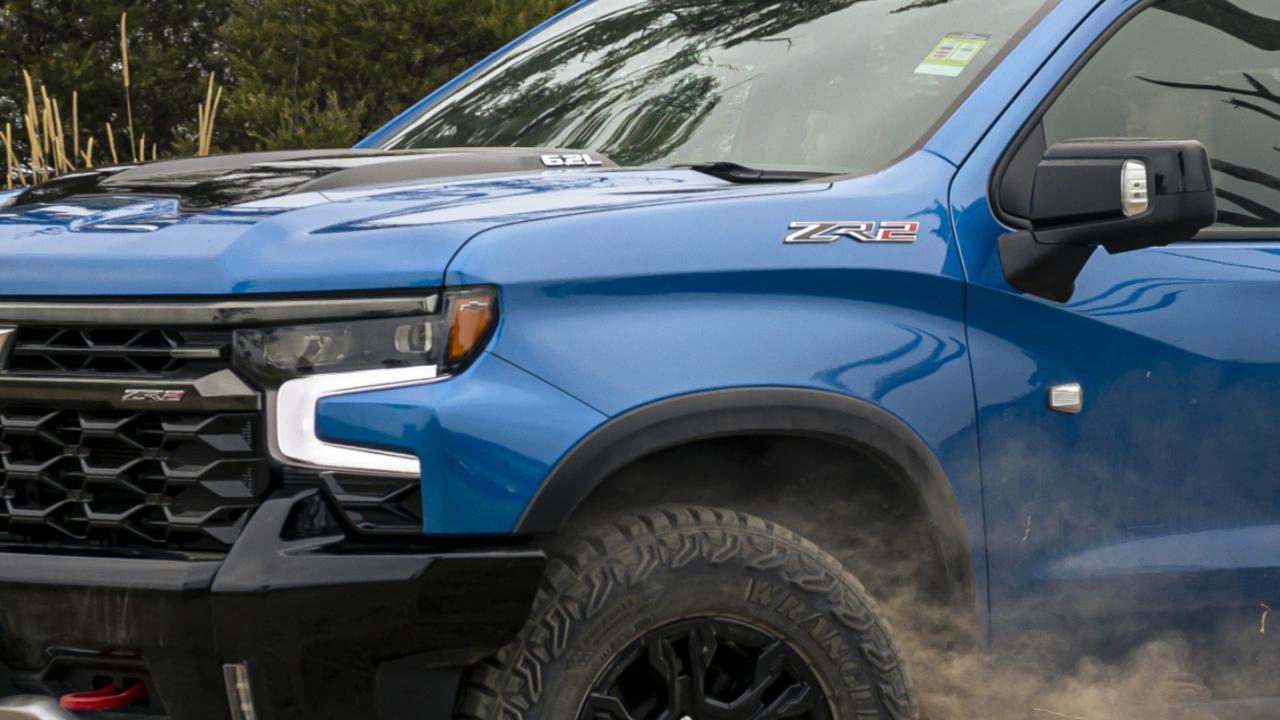First Australian Google Pixel review: can Google be the new Samsung in the smartphone war?
GOOGLE’S first smartphone has impressive features that make it a serious competitor against Apple and Samsung. But there are some drawbacks.
Technology
Don't miss out on the headlines from Technology. Followed categories will be added to My News.
THE PIXEL is dubbed the first “Phone by Google” but it’s not a typical debut device.
This smartphone is a sophisticated marriage of metal and glass, with the physical features you’d demand of a flagship phone, and just enough design differences to ensure it’s not an iPhone clone.
And, while its hardware is slick, it’s the software that is bound to impress.
Rather than talk on this phone, Google wants you to talk to this phone.
GOGLE SECRETS: 13 hidden features of Google’s Pixel phone
GOOGLE VR: Google’s new Pixel phones come with virtual reality smarts
It’s a handset designed to host your trivia games, memorise your favourite foods, direct you to new restaurants, and let you know if your schedule is such a mess you should stay in bed.
But the Pixel XL is also missing smartphone staples, and faces competition from the biggest two names in the market.
Is Google’s first phone ready to knock down Samsung and Apple? We tested a Pixel XL to find out.
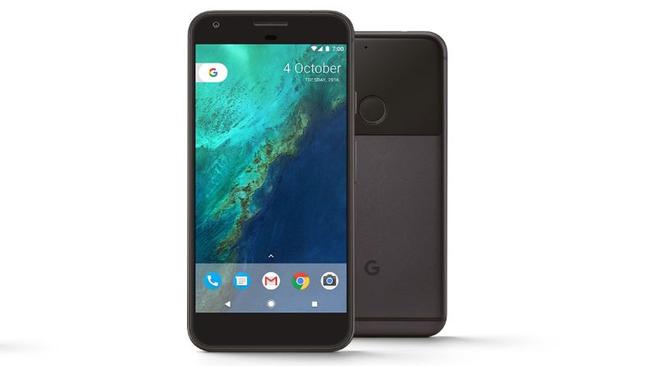
CAN A SOFTWARE COMPANY DO HARDWARE?
Software companies don’t always excel at making hardware.
It’s like singers trying acting — sensible on paper but a different discipline in practice.
The Google Pixel is an exception to this concern, and nails a desirable look right out of the box.
While the hardware was designed by Google, it was made by HTC, and the company’s expertise shows.
Its anodised aluminium meets the Corning Gorilla Glass 4 panels on its front and back seamlessly, with no gaps or snags.
Both materials are also pleasingly durable and survived minor, everyday knocks in our care.
Its rounded corners and flat edge make this phone look like an HTC/Apple hybrid, in a good way, and the glass pane inset on the top third of its rear panel gives this phone an instant point of difference.
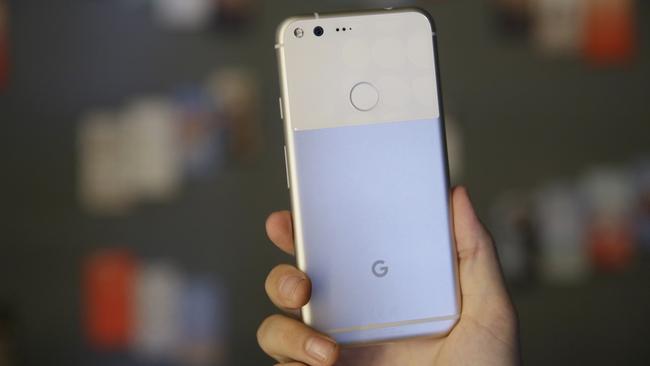
It’s also practical. When you’re feeling for the rear fingerprint sensor, this panel lets you know you’re in the right area.
That fingerprint sensor is also sensibly placed, taking the cramp out of your thumb and letting your index finger unlock and open the phone. A quick sweep down the sensor also reveals notifications — a compulsive addition.
The Pixel phone is only available in two colours in Australia, Quite Black and Very Silver, though they are quite possibly the most Googley colour names ever released.
TALK TO THE HANDSET
While the hardware is slick, this phone’s stars appear when you turn it on.
The Pixel XL arrives with Android Nougat software, and debuts Google Assistant, a voice-activated addition designed to do your bidding.
Unlike other well known voice apps, Google Assistant has a closer relationship with the internet and a healthy serve of artificial intelligence.
In our testing, it’s been more useful than its competitors. We’re talking about you, Siri and Cortana.
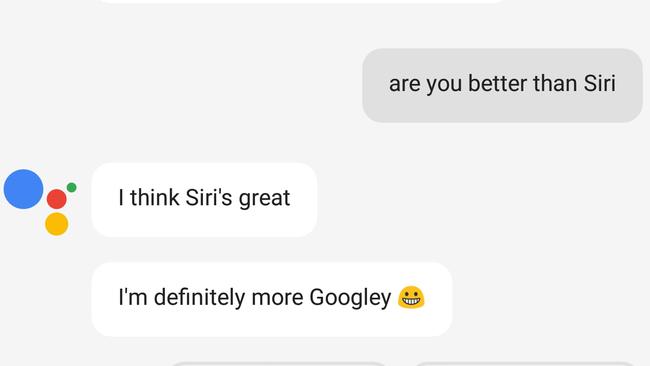
Google Assistant can be triggered at any time by tapping the phone’s home icon, and it can use context to improve its results.
If you’re viewing a photo of a monument on Instagram, for example, Google Assistant may be able to identify it for you from its database of images.
It can also use your location to identify businesses around you, like restaurants of a certain cuisine, and warn you if they’re close to closing.
From the internet, it can dig up sports results, weather forecasts, sunrise times, the news in audio or written form, flight times, hotel rooms, and trending YouTube videos if you tell it you’re bored.
It can recite poems, bad jokes, and anyone trying this phone should take the opportunity to play “Lucky Trivia” — a TV quiz show-like experience in which Google Assistant asks you, and your friends, questions from the internet. It’s naff but fun.
This Assistant can also mine your information stored with Google — appointments from Calendar, stored photos, flights in Trips — to make more advanced suggestions.
It doesn’t always get the answers right. Some of its landmark matches were wrong, for example, and very occasionally it misheard my words.
It answered my questions correctly more often than not, however, even when I spoke to it with food in my mouth and a non-American accent.
TOP RATED CAMERA
Google made a big show of its camera getting a top score from independent testing firm, DxOMark, and it’s not surprising.
The company’s previous Nexus phones had a spotty reputation for cameras, and to claim top spot from the Apple iPhone 7 by three points is a big deal.
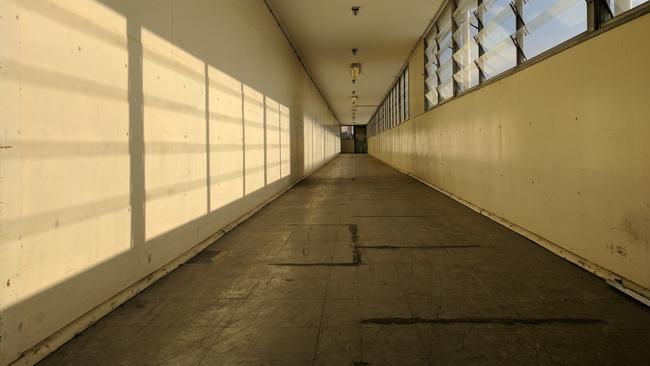
The driving reason behind the Pixel’s camera success is its intelligent use of HDR, or High Dynamic Range, to achieve greater dynamic range and more even exposure in photos.
The feature is contained in a mode called HDR+ Auto, and it ensures photos are evenly exposed and mimics optical image stabilisation.
In practice, results from this phone were surprisingly detailed and well lit.
It lacks some of the more advanced features of other phones, such as RAW image capture and the ability to change shutter speed, but hidden in plain sight are additions like exposure compensation, focus lock, and white balance control.
Google has hidden handy photos modes in its menu, including a unique Lens Blur mode that delivers artificial bokeh and depth to your images, and slow-motion video.
The camera will also capture 4K video at up to 60 frames per second, and you can switch between it and photo mode with a swipe.

The 12.3-megapixel phone camera did an admirable job in low light, capturing the colours of graffiti at night in a darkened alley, for example, though it is prone to a pronounced halo effect from direct lighting.
It’s also not the fastest phone camera on the market — the new Sony Xperia XZ camera opens faster and delivers greater resolution.
SMART ADDITIONS: SOME BORROWED, SOME NEW
In addition to a voice assistant, Google has added some really smart, timesaving extras to this phone that might have been, ahem, inspired by other phone makers.
You can double tap the power button of this phone to open the camera fast (sound familiar, Samsung?).
You can hold a finger on an app to see extra shortcuts for things like navigating home or taking a selfie (sound familiar, Apple?).
And there are plenty of its own devising too. You can double twist the phone when in camera mode to swap to the front camera, and vice-versa.
It also has a standard headphone jack, a fast-charging (and safe) 3450mAh battery that easily sees the day out, is powered by a speed Snapdragon 821 chip and 4GB RAM, and uses the latest Category 11 4G networks that promise faster download speeds.
DRAWBACKS
This phone omits a couple of features smartphone aficionados have come to expect in $1000-plus handsets.
Unfortunately, it’s not water-resistant, which might be a difficult adjustment for Samsung Galaxy Note7 refugees.
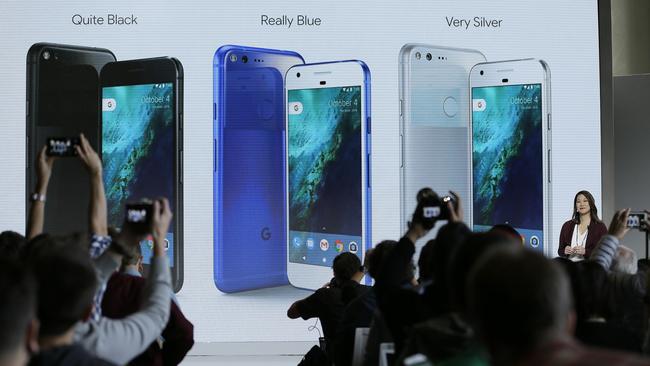
There’s also no expandable storage on this phone. You cannot just add a memory card if you regret buying the 32GB version, though Google does offer free photo and video storage to help address the issue.
The placement of the On button above the volume key will also take adjustment for some users, and the phone is only available on plans through Telstra at this point.
GOOGLE PIXEL XL VERDICT
The Pixel might not be the first phone to carry Google’s brand but it is clearly the company’s most impressive outing to date.
Its form is well crafted, its software pushes boundaries, and its subtle touches, like viewing notifications without even touching the screen, are likely to make this a fan favourite.
It will also benefit from the launch of Daydream VR and the latest Android updates before other phones.
The Pixel’s lack of water resistance and expandable memory could be a deal-breaker for some phone buyers, but the first ‘Made by Google’ phone is a worthy and appealing Apple and Samsung alternative destined to shake up the duopoly.
Google Pixel
4.5 out of 5 stars
Originally published as First Australian Google Pixel review: can Google be the new Samsung in the smartphone war?





